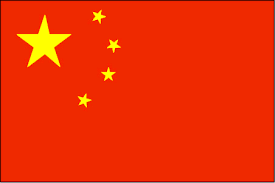Chemycal has been acquired by 3E
Learn MoreChemycal has been acquired by 3E
Learn MoreDiscover how Chemycal PRO helps you boosting your regulatory monitoring:

At the end of 2019, both the State Administration of Market Regulation (SAMR) and the National Health Commission (NHC) proposed significant changes to two cornerstone food labeling documents for public comments:
(*) In November of 2019, SAMR published the draft Measures for Supervision and Administration of Food Labeling ("draft Measures")[1] and notified the draft to the World Trade Organization (WTO)[2] on December 12, 2019;
(*) On December 31, 2019, NHC published the revised draft Food Safety National Standard for the Labeling of Prepackaged Foods (GB 7718-2011)[3] with a comment period due by February 28, 2020.
Both labeling documents include detailed requirements for food labeling and have significant implications on the current labeling practices for both locally produced and imported foods.
The proposed amendments by SAMR and NHC regulating Chinese food labeling laws are intended to address the issues that emerged in the past decade and provide guidance to the food industry and additional protection to consumers.
The following highlights some of the proposed labeling changes that the food industry will need to be mindful of to ensure compliance in China.Accordingly, it will be very difficult to revise or fix a labeling error at port since so-called "double stickering" will be prohibited. Furthermore, redirecting food from another country to China will not be allowed if the food sold abroad does not possess a Chinese label.
(*) Declaration formats for food additives revised yet to be reconciledThe draft Measures expand food additives subject to mandatory substance name declaration to include emulsifiers and thickeners,[4] and allows food additives, other than sweeteners, preservatives, colorants, emulsifiers and thickeners, to be represented by their substance name, class name or INS number. However, in the draft GB 7718, only when a food additive is already represented by its class name and the largest surface area of the label is less than 60 cm2 can its substance name be substituted by its INS number. It remains to be seen how these inconsistencies will be resolved in the final version of these documents.
CONTINUE READING ON www.khlaw.com
2013 © MyChemicalMonitoring. ALL Rights Reserved. About Us | Terms and Conditions